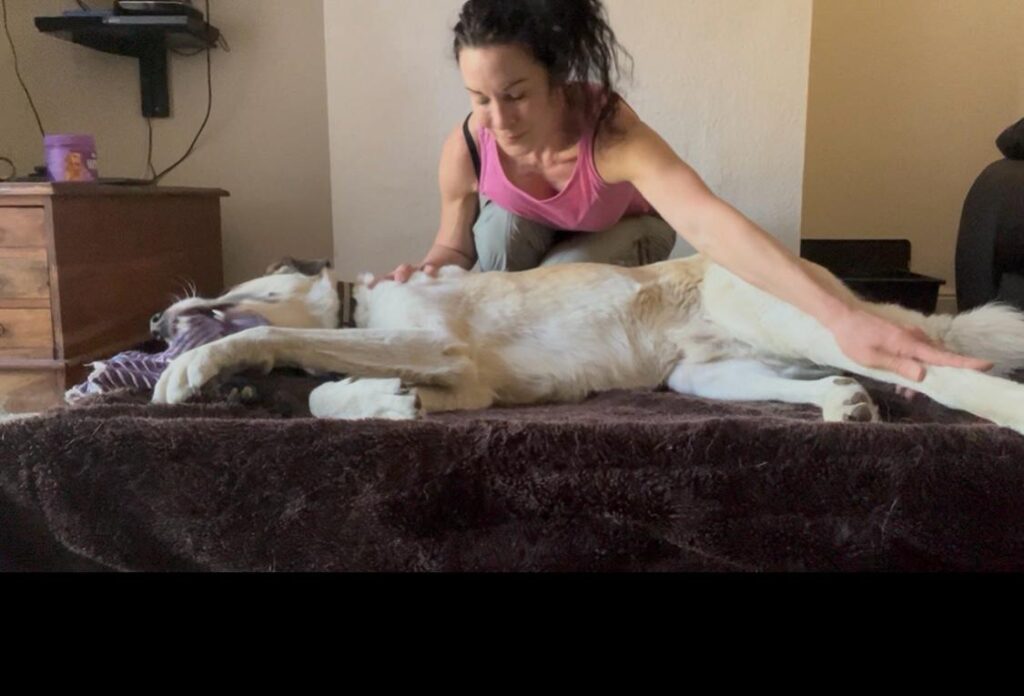Foundations: Understanding Pain in Dogs
Pain is not simply a sore paw or an “ouch” moment – it’s a complex experience involving sensory input, emotional processing, and behavioural expression. Because dogs can’t verbalise pain, it often lurks under the surface, disguised in subtle ways.
Professor Daniel Mills (University of Lincoln) has highlighted in several studies that pain is a major but under-recognised contributor to behavioural problems. In one review, nearly a quarter of behavioural referral cases involved pain as a key factor. In others, the percentage was even higher. Mills argues strongly for a “pain-first” mindset: if a behaviour change could be linked to discomfort, investigate it.
Silent Sufferers: Why Dogs Hide Pain
Dogs are master stoics. Evolutionarily, showing weakness could be fatal, so they’ve adapted to mask discomfort. Adrenaline can temporarily hide acute pain, and in chronic cases the changes creep in so slowly that both dog and owner normalise them. Adrenaline is also reason why a dog at the vets may not display pain signals despite being manipulated while examined.
This makes behavioural signs essential. Irritability, withdrawal, subtle postural changes, or a reluctance to do something they once enjoyed can all be early indicators.
Behavioural Changes That Could Signal Pain
Red flags (strong indicators): These are signs that maybe notice with acute pain.
- Sudden aggression when handled in certain spots
- Refusal to move, freeze-ups, or reluctance to climb/jump
- Yelping or whining when shifting position
- Obvious lameness
- Reactivity
Soft clues (easy to miss): These signs are more likely to be seen with chronic pain
- Slower “warm-up” after rest
- Choosing softer or flatter lying surfaces
- Changes in tail carriage or sleeping posture
- Reduced playfulness or enthusiasm for walks
- Irritability or clinginess
- Separation anxiety
- Resource guarding
- Chewing, licking certain areas of their body
Mills also highlights “adjunctive behaviours” – quirky, often overlooked actions like excessive licking at air, stargazing, frog-sitting, or odd stretches. These may be displacement behaviours triggered by pain.
Tools That Help Owners and Professionals
The Galen Comfort Scale
Developed by Galen Myotherapy, the Galen Comfort Scale is a simple but powerful framework for observing dogs in their daily lives. Instead of focusing only on lameness or overt symptoms, it looks at a range of behaviours and postures – such as reluctance to play, altered tail carriage, or changes in how a dog gets up or lies down.
It uses a graded scoring system, helping owners track subtle, progressive changes in their dog’s comfort levels. This makes it invaluable not just for recognising pain, but also for monitoring whether treatment is helping.
When used alongside veterinary and behavioural insights, the Galen Comfort Scale gives owners a structured, everyday tool to pick up what their dog may be silently signalling.
Dynamic Dog Assessments
Dynamic Dog Assessments, pioneered by Gemma Hodson, takes the idea of “looking deeper” even further. These assessments involve observing dogs in motion – walking, trotting, turning, rising, lying – and activities of daily living and identifying subtle asymmetries, compensatory patterns, changes in coat patterns, or postures that may suggest discomfort.
Unlike a static vet check in the consulting room, this dynamic approach catches the “real life” picture of how a dog is coping with movement and activity. It’s particularly valuable for spotting pain before it becomes severe or before obvious lameness appears.
Together, the Galen Comfort Scale and Dynamic Dog Assessments bridge the gap between owner observations and veterinary diagnostics – they empower caregivers to notice pain early and advocate for their dogs.
From Puppy to Senior: How Pain Shows Up Differently
- Puppies: Sudden lameness, reluctance to jump, “growing pains,” or congenital issues.
- Adults: More subtle performance drops, reluctance to repeat formerly easy tasks.
- Seniors: Stiffness, frequent repositioning, sleeping more, behavioural withdrawal.
At all ages, owners should know their dog’s “normal” – because deviation from baseline is often the biggest clue.
Acute vs. Chronic Pain
- Acute pain: Sudden, protective, usually obvious (limping, yelping, guarding). If untreated, it risks becoming chronic.
- Chronic pain: Lasts beyond healing, often hidden. Behavioural changes dominate (withdrawal, irritability, reduced play). Chronic pain may involve central sensitisation, where the nervous system amplifies signals.
Key Take-Home Messages
- Dogs hide pain well; behavioural shifts are often your first clue.
- Daniel Mills’ research shows pain and behaviour are deeply intertwined –always consider pain with behaviour changes.
- Tools like the Galen Comfort Scale and Dynamic Dog Assessments give owners practical, structured ways to detect discomfort.
- Never dismiss changes as “just old age” – pain relief and comfort care can transform quality of life. Collaboration between vets, behaviourists, myotherapists, and owners is essential.
References
https://www.veterinaryirelandjournal.com/small-animal/388-understanding-the-link-between-
canine-pain-and-problem-behaviours
https://staff.lincoln.ac.uk/dmills
https://www.mdpi.com/2076-2615/10/2/318
https://www.pure.ed.ac.uk/ws/portalfiles/portal/384594990/Pain_and_paraesthesia_Mills_Co
utts_McPeake_2023_1_.pdf
https://pmc.ncbi.nlm.nih.gov/articles/PMC11025458/
https://pubmed.ncbi.nlm.nih.gov/37743157
https://www.vet.cornell.edu/departments-centers-and-institutes/riney-canine-health-center/canine-health-information/recognizing-pain-dogs
https://www.zoetispetcare.com/blog/article/chronic-acute-pain-dogs
https://www.galenmyotherapy.com/galen-comfort-scale
https://www.dynamicdog.co.uk/dynamic-dog-assessment

Author: Lorrain Tester
Lorraine Tester is a Dynamic Dog Practitioner, Galen Myotherapist, dog trainer and behaviourist who specialises in the complex relationship between pain and behaviour. Through her work, she has seen how often unwanted behaviours are not a matter of disobedience, but a reflection of pain or discomfort that has gone unnoticed. Her goal is to ensure that pain in dogs is more widely recognised and addressed, so they can live healthier, happier lives.

